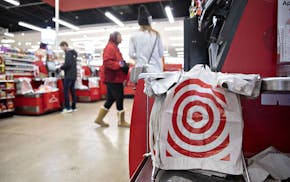Calculations show sharing cabs could make big difference in NYC.
By KENNETH CHANG and JOSHUA A. KRISCH • New York Times
It may be anathema to New Yorkers. But a team of mathematicians and engineers has calculated that if taxi riders were willing to share a cab, New York City could reduce the current fleet of 13,500 taxis up to 40 percent, in that way unclogging traffic, conserving fuel and fighting air pollution.
"The predicted economic and environmental savings are considerable," said Steven Strogatz, a mathematician at Cornell University and an author of a paper describing the findings, published in Proceedings of the National Academy of Sciences.
Researchers wanted to know whether the principles of the "sharing economy" typified by services like Airbnb, in which people rent out their apartments, could be applied to taxis.
"Think of how much spare capacity you have in taxis in New York City," said another team member, Carlo Ratti, the director of the Senseable City Laboratory at the Massachusetts Institute of Technology. "You're at a hotel, you're going to JFK Airport, and you take a taxi. And just minutes later, there's somebody else taking another taxi, half empty, to JFK."
To study ride-sharing scenarios, the researchers delved into a database compiled by the New York City Taxi and Limousine Commission that included information about each of the 172 million taxi rides in the city in 2011: where the passenger was picked up and dropped off, time of pickup and time of drop-off.
Then, applying a computational technique known as shareability networks, they combined trips that were headed in the same direction at the same time without taking the passengers too far out of their way.
They found that sharing would reduce the number of trips, and the number of taxis, by 40 percent and that passengers would still arrive in the same amount of time, give or take a few minutes. (The analysis did not look at how many people were riding in each cab. Newer data do include the number of passengers.)
The team acknowledged that such a system could not be implemented without changes in the way people hail taxis.
Much of the inefficiency in the current system results from a driver not knowing the destination until after the pickup. The same inefficiency occurs with elevators in office buildings.
In some newer buildings, riders press the floor button in the lobby, and the elevator system can use computer algorithms to allocate rides more efficiently. Similarly, if a taxi passenger specified a destination before being picked up, a sophisticated dispatching system could figure out which rides could be shared.
Smartphone apps, already used by taxi services like Uber and Lyft, could make that possible. The authors of the new study have set up a website, hubcab.org, that allows anyone to explore the taxi ride database.
On the streets of New York City, the skepticism sounded more like a Bronx cheer.
"The whole thing strikes me as silly, and it will be ignored," said longtime cabbie Gene Salomon, author of the 2013 book "Confessions of a New York Taxi Driver."
"New Yorkers do not like to share cabs," he said.

Faced with possibly paying for news, Google removes links to California news sites for some users

Xcel, UND say Midwest hydrogen 'hub' at risk from tax credit rules
State says 10 water systems in the metro have unsafe levels of PFAS, under new EPA rule

Drought, heat raise the risk of a repeat of Canada's record-breaking wildfires last year

